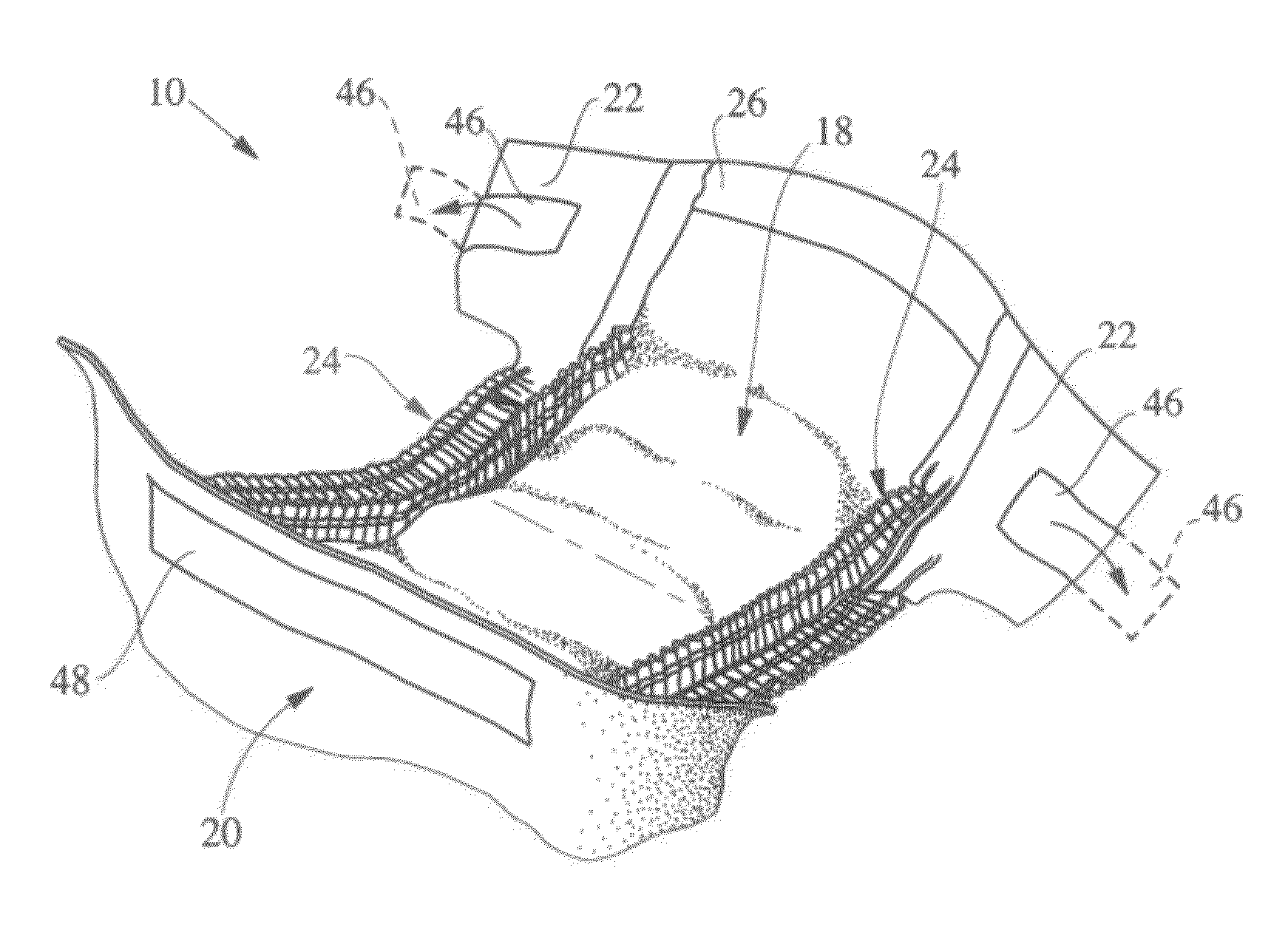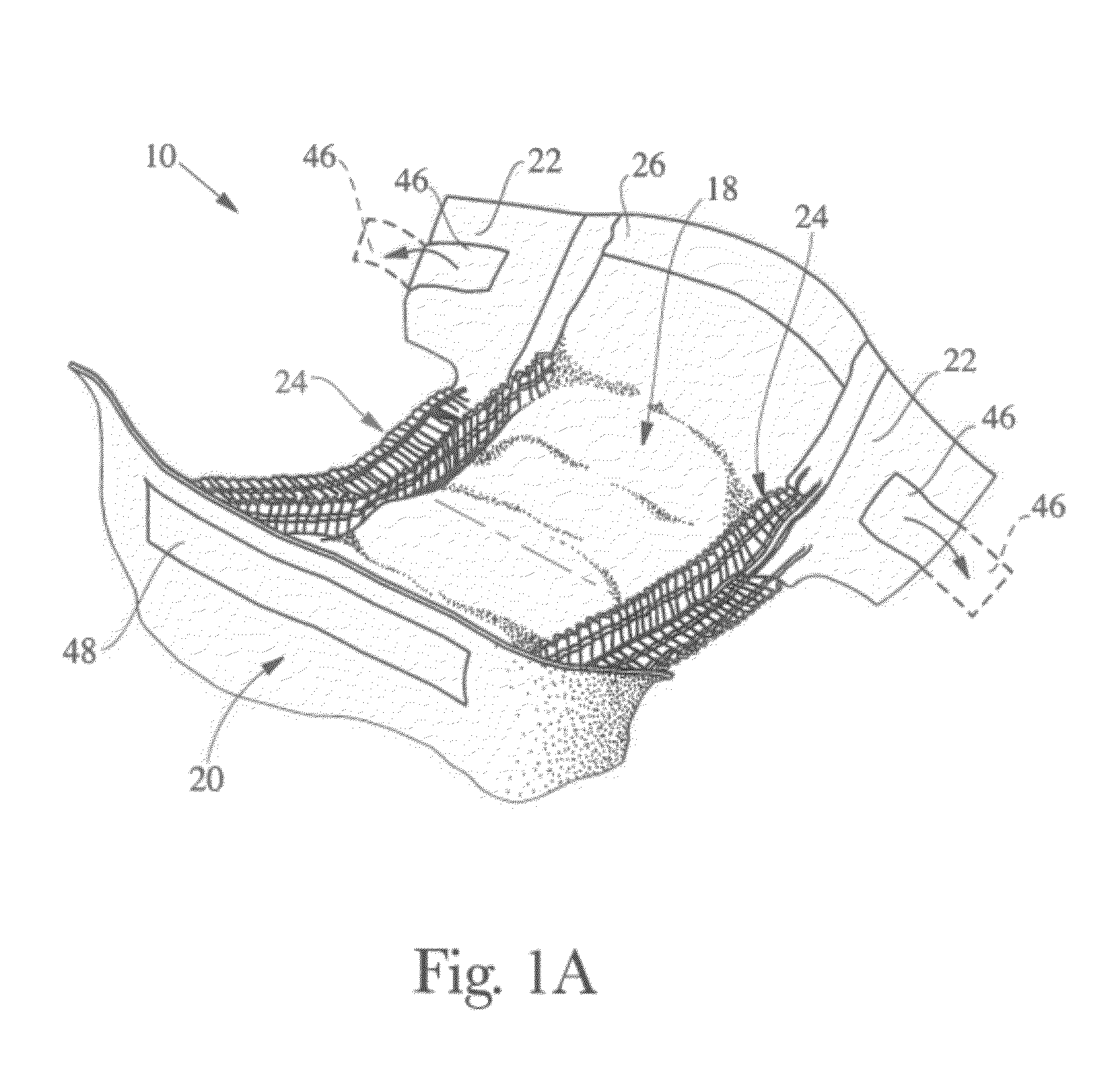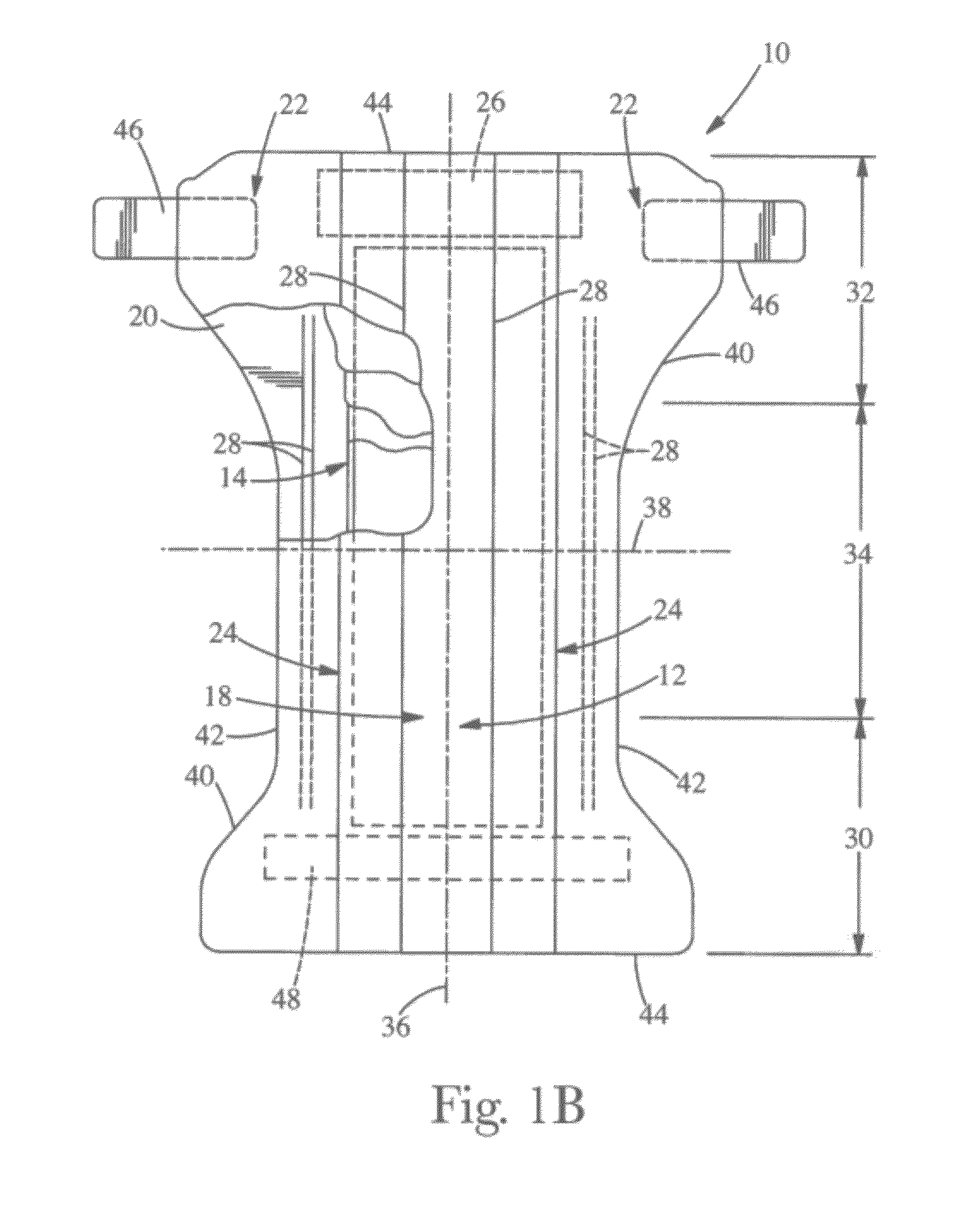Absorbent Article and Components Thereof Having Improved Softness Signals, and Methods for Manufacturing
a technology of absorbent articles and softness signals, applied in the direction of other domestic articles, transportation and packaging, bandages, etc., can solve the problems of eluded precise measurement or quantification, no universally accepted unit or method of softness measurement, no standard or universally accepted unit of softness measurement, etc., and achieves the goal of achieving objective characterization
- Summary
- Abstract
- Description
- Claims
- Application Information
AI Technical Summary
Problems solved by technology
Method used
Image
Examples
example 1
[0123]An exemplary embodiment of the present invention, Sample A, was a spunbond nonwoven made in a four beam process, laying down four layers (layers A, B, C, D) of fibers, two layers formed of ExxonMobil 3155 polypropylene and two layers formed of ExxonMobil SFT315 polypropylene blend with the bottom layers of the nonwoven being made from ExxonMobil 3155. Each layer contained 2.5% by weight of a master batch containing about 30% by weight polypropylene and 70% TiO2 (a whitener), corresponding to about 1.75 % by weight TiO2 for the layer. The spunbond nonwoven was bonded using the bond pattern described for Example 2 below. The bottom side of the nonwoven was hydraulically treated using two rows of jets, each at 50 bars (725 p.s.i.) pressure, for a total energy transmission of 0.02 kwhr / kg.
[0124]By comparison, Control A was made from the same nonwoven substrate and bond pattern with only about 0.3% of whitener in each layer. Further, Control A was hydroengorged using a hydraulic tr...
example 2
[0128]An improved backsheet laminate including an improved spunbond nonwoven web laminated / adhered to a polymeric film was manufactured. The nonwoven web was calender-bonded in a pattern, between the nip between a pattern calender roller and a smooth calender roller as described herein, to impart a pattern of bond impressions as schematically suggested in FIG. 3B. The improved web had a basis weight of about 25 gsm and comprised PP.
[0129]The web was manufactured by First Quality Nonwovens, Inc., Great Neck, N.Y., using a calender roller bearing a repeating “P11” pattern as schematically depicted in FIG. 3A, as provided by The Procter & Gamble Company, Cincinnati, Ohio, and manufactured by Ungricht Roller & Engraving Technology (A.+E. Ungricht GmbH+Co KG), Monchengladbach, Germany. Referring to FIG. 3A, the engraving / machining specifications for the roller pattern were such that WS1 and LS1 were each 8.077 mm; WP1 was 1.69 mm; and LP1 was 1.1 mm, such that the protrusion surface 100 ...
PUM
| Property | Measurement | Unit |
|---|---|---|
| height | aaaaa | aaaaa |
| diameters | aaaaa | aaaaa |
| diameters | aaaaa | aaaaa |
Abstract
Description
Claims
Application Information
 Login to View More
Login to View More - R&D
- Intellectual Property
- Life Sciences
- Materials
- Tech Scout
- Unparalleled Data Quality
- Higher Quality Content
- 60% Fewer Hallucinations
Browse by: Latest US Patents, China's latest patents, Technical Efficacy Thesaurus, Application Domain, Technology Topic, Popular Technical Reports.
© 2025 PatSnap. All rights reserved.Legal|Privacy policy|Modern Slavery Act Transparency Statement|Sitemap|About US| Contact US: help@patsnap.com



